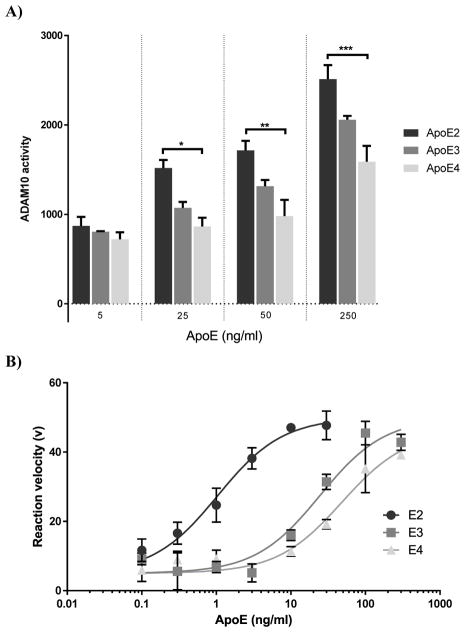Fig. 1.
ADAM10 activity is apoE-isoform dependent. (A) ADAM10 activity in a cell free paradigm was significantly modulated by apoE in an isoform and dose dependent manner (apoE2>apoE3>apoE4), (F (11, 24) = 25.77; p<0.0001). Differences between apoE2 and apoE4 were statistically significant at concentrations ≥25ng/ml. For all apoE concentrations, ADAM10 activity was lower in the presence of apoE4 compared to the other isoforms. (B) ApoE isoform-specific influence on ADAM10 activity. ApoE2 demonstrated the greatest influence on ADAM10 activity (EC50 = 0.69ng/ml ± 0.18) in comparison to apoE3 (EC50 = 24.27ng/ml ± 8.04) or apoE4 (52.24ng/ml ± 14.01). Activity data are presented as ADAM10 activity (n=3) ±SEM. Statistical significance was determined by two-way ANOVA followed by Sidak post-hoc analysis. EC50 values were generated using nonlinear regression analyses (EC50 ± SEM (n=3)). *p<0.05; ** p<0.01; *** p<0.001; **** p<0.0001.

